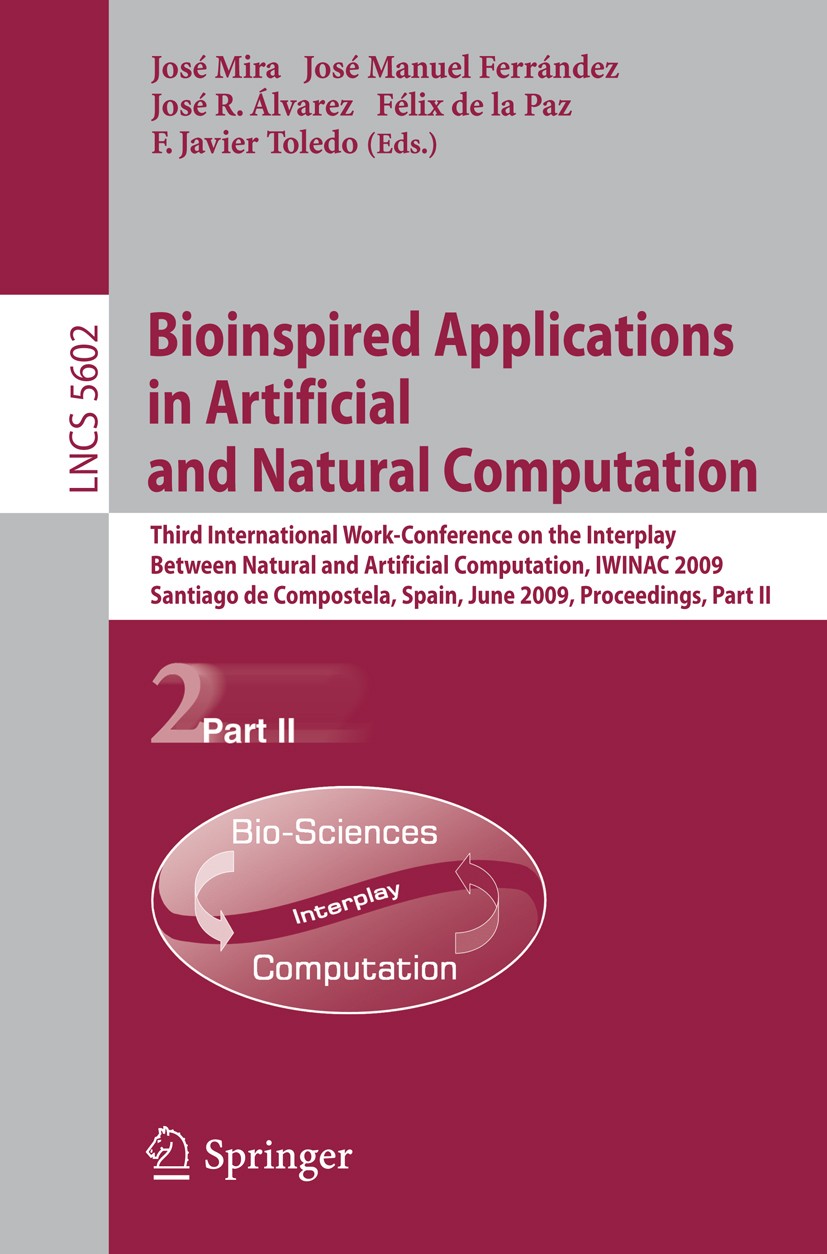| 期刊全称 | Bioinspired Applications in Artificial and Natural Computation | | 期刊简称 | Third International | | 影响因子2023 | José Mira,José Manuel Ferrández,F. Javier Toledo | | 视频video | http://file.papertrans.cn/188/187249/187249.mp4 | | 学科分类 | Lecture Notes in Computer Science | | 图书封面 |  | | 影响因子 | The two-volume set LNCS 5601 and LNCS 5602 constitutes the refereed proceedings of the Third International Work-Conference on the Interplay between Natural and Artificial Computation, IWINAC 2009, held in Santiago de Compostela, Spain, in June 2009. The 108 revised papers presented are thematically divided into two volumes. The first volume includes papers relating the most recent collaborations with Professor Mira and contributions mainly related with theoretical, conceptual and methodological aspects linking AI and knowledge engineering with neurophysiology, clinics and cognition. The second volume contains all the contributions connected with biologically inspired methods and techniques for solving AI and knowledge engineering problems in different application domains. | | Pindex | Conference proceedings 2009 |
The information of publication is updating

|
|
 |Archiver|手机版|小黑屋|
派博传思国际
( 京公网安备110108008328)
GMT+8, 2025-11-13 20:34
|Archiver|手机版|小黑屋|
派博传思国际
( 京公网安备110108008328)
GMT+8, 2025-11-13 20:34


